Distinguished Critique: "Superman: Whatever Happened to the Man of Tomorrow?" Review
Alan Moore constructs an emotionally driven and fond farewell to the pre-Crisis Superman
—by Nathan on June 17, 2023—
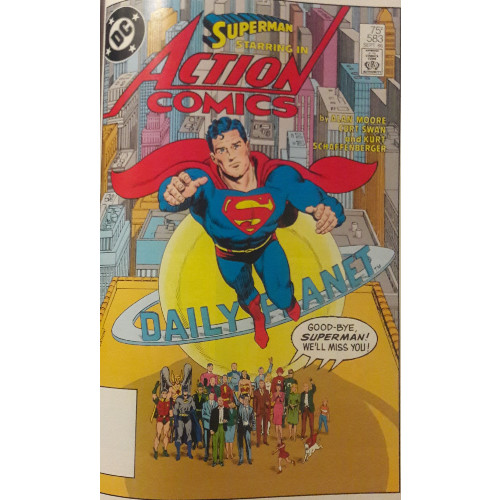
A few months after Crisis on Infinite Earths ravaged the DC Multiverse, streamlining the number of universes inhabiting its far-flung edges, but shortly before John Byrne rebooted Superman with his Man of Steel limited series, DC decided to tell the final Silver Age Superman story. The Superman story to end all Superman stories.
And, no, not "end" as in "tell the definitive" or "be the best" or "put all other stories to shame." I mean "end" as in "final." The last Superman story.
Crisis had given DC the perfect opportunity to tell such a story, to ask about what happened to the Man of Steel before his fated reboot. The story feels "imaginary" in the same way that most of Marvel’s What If-? stories do: what if pre-Crisis Superman was allowed to age? What would his life be like? How would it end?
The task of taking Superman’s history to a potentially logical conclusion fell on Alan Moore, who was simultaneously working on his acclaimed Watchmen series. For a writer whose darker stories are often highly regarded–Watchmen, The Killing Joke, his run on Swamp Thing–Alan Moore makes "Whatever Happened to the Man of Tomorrow?" uncharacteristically celebratory–in the same way "The Death of Superman" celebrated the qualities of the then-modern Man of Steel, Moore’s story is a reflection of the character’s storied history, the final chapter of the pre-Crisis world Kal-El once inhabited.
"Whatever Happened to the Man of Tomorrow?"
Writer: Alan Moore
Pencilers: Curt Swan, Murphy Anderson
Inkers: George Perez, Kurt Schaffenberger
Colorist: Gene D'Angelo
Letterer: Todd Klein
Issues: Superman #423, Action Comics #583
Publication Date: September 1986
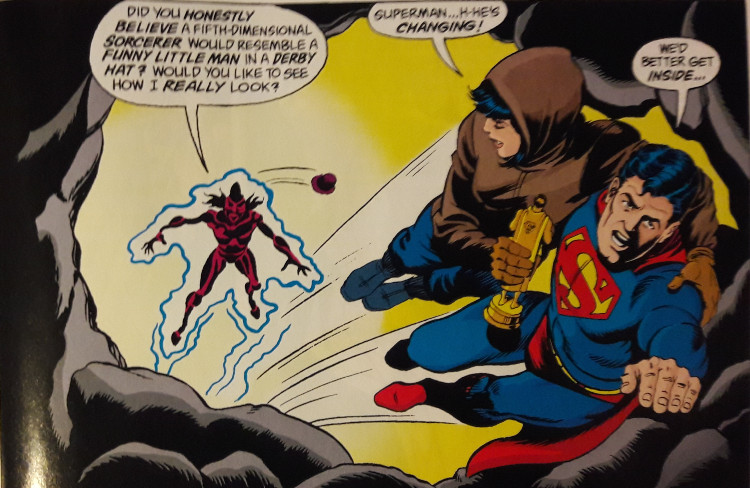
Note: save for some minor edits, this blog is the same as it was when I originally posted it to Hubpages
Though I noted this two-part arc celebrates Superman, I didn’t say it wasn’t a darker affair. Moore, seemingly true to form, is not hesitant to take pieces of Supes’ history and modify them or break them down to graft whatever stirring emotion he hopes to attach to particular moments. Without concern for future continuity or history, Moore can take his paintbrush to the heavily illustrated canvas of Superman’s mythology and paint however he wants.
What’s nice is Moore’s use of Superman’s history feels fairly generalized. In my "Death of Superman" review, I noted how awkward it could be when writers pulled in elements very much entrenched in Superman’s 90s history. It made "Death of Superman" a difficult story to head into ignorantly. Moore, conversely, never makes the reader feel lost or implores them to know the minutiae of Superman's history. If you’re aware of some of Superman’s colorful cast or iconic locations–Lois Lane, Lex Luthor, Brainiac, Bizarro, The Daily Planet, the Fortress of Solitude, Krypto the Super Dog, the Legion of Superheroes–you’re good to go.
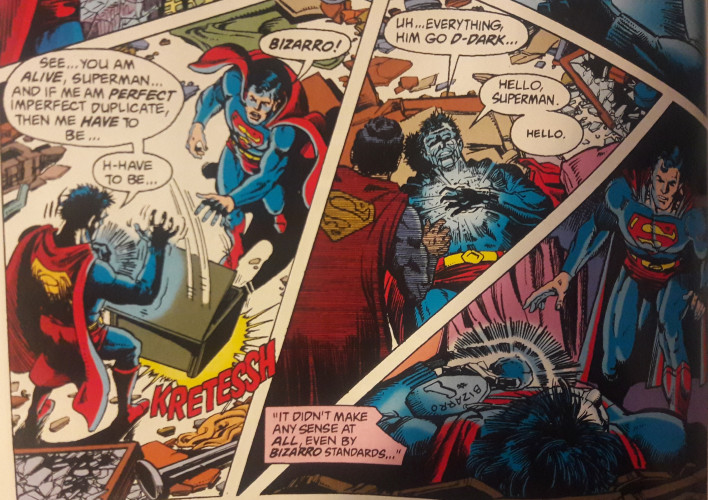
Moore selects these integral, foundational elements and toys with them wonderfully. His story sees Superman's enemies perform a last-ditch effort to destroy the Man of Steel, a formation of various villains set against him in different ways. Toyman and the Prankster attack the hero at work, delivering the corpse of one of Superman’s friends; a group of Metallos ambush the Daily Planet; Lex Luthor and Brainiac team up to assault the Fortress of Solitude in a final wave.
The concept works threefold. First, it provides Moore with a simple yet effective premise for uniting these pieces. On its surface, the plot is fairly straightforward. Villains attack, Superman fights back while trying to protect the people he loves. Yet the complexity under the surface lies in Moore’s ability to effectively utilize his cast. He is, again, aided by his disconnect from future continuity: Brainiac physically tethers himself to Lex Luthor, working the madman’s body even after Luthor physically perishes; Bizarro dies fighting Superman, the creature’s twisted psyche prompting him to believe that death results in him becoming the perfect opposite of Superman; a few friends of Superman’s die before the story’s end. Moore is able to toy with these notions–what would happen if Lex Luthor died? What if Superman’s identity was revealed to the world?–without frustrating then-current continuity or creating frustrating ramifications for future plots.
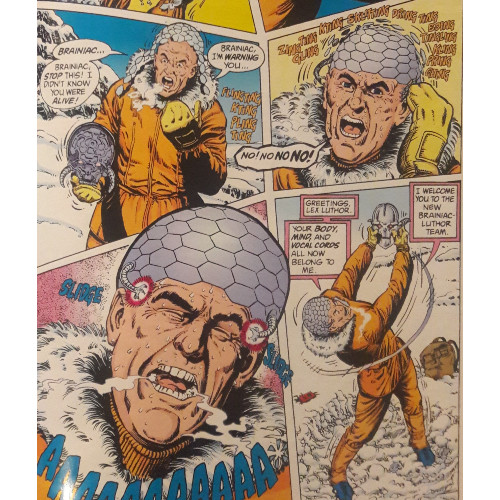
Second, Moore not only plays with continuity but inserts genuinely interesting character ideas other writers may not have considered. He allows Lex Luthor’s arrogance to work against him fatally when he attempts to use Brainiac as a puppet, the latter asserting dominance over Luthor’s whole self. Mr. Mxyzptlk attacks Superman in a reddish, monstrous form after initially popping up as his characteristically impish self. "Do you honestly believe a fifth-dimensional sorcerer would resemble a funny little man in a derby hat?" he inquires of Clark. The notion that Mxyzptlk could have any other form is one I’ve never considered, nor the idea that a guy like Bizarro would end his life to become the perfect opposite of Superman.
Third, Moore creates an engaging portrait of Superman’s character. One of the narrative's most powerful images comes at the end of the first issue: Superman sits in his Fortress of Solitude, crying, after interacting with a future version of Supergirl, who was deceased at that time in mainstream continuity. Elsewhere, he expresses genuine concern over Bizarro’s passing, protects friends and allies best he can, mourns the loss of others, and regrets taking the life of one his foes. We’ve seen in stories like "Death of Superman" how staunch Superman can be when protecting those he loves or how humanity lies at the heart of this alien hero in Byrne's Man of Steel. But Moore exemplifies many of those intrinsic characteristics in just two issues–here’s a hero whose strength and near invincibility can’t keep him from getting hurt but who makes difficult decisions despite the pain; here’s a Superman who places the protection of his loved ones above all else, even when their security is uncertain.
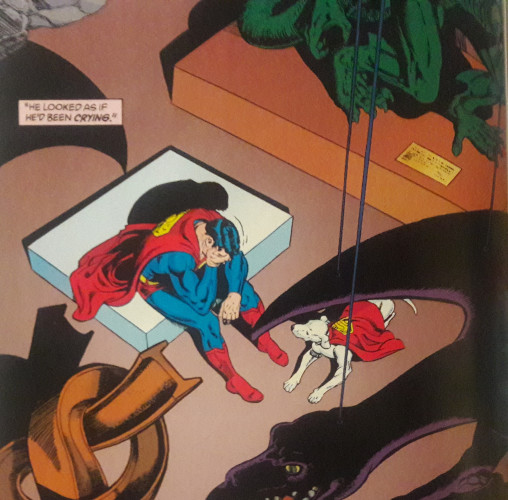
Moore litters the issues with engaging details readers would take great care to notice (similar to what he does in Watchmen). When the Legion of Superheroes visit from the future, they discuss how important that particular day is to Superman and offer him a statuette; little does Superman realize that the figure holds great importance to the plot later. A few pages after, Lana Lang uses newly acquired super-hearing to overhear a conversation where Superman admits he loves Lois, despite his continually torn affections between Lois and Lana; this then convinces Lana to take a stand against several of Superman’s enemies as a last attempt to prove how much she loves him, no matter Clark's own affections.
The story’s conclusion is also memorable to note. For the sake of not spoiling the narrative, I’ll be brief and opaque. I will state that Moore crafts a frame tale surrounding the events which occur after this final confrontation between Superman and his greatest adversaries. Like with Moore's details, if you’re looking deeply, you’ll catch the ending several pages before it actually happens or maybe even just theorize about it. I was happy when Moore made that hypothesis reality, and despite how obvious some readers may find the ending, it’s nevertheless satisfying in a way that wraps up the tale and puts a definitive end on the adventures of Silver Age Superman.
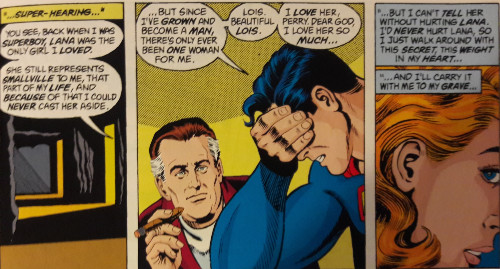
“Whatever Happened to the Man of Tomorrow?” is often considered a classic…and for good reason. Moore, along with Curt Swan, create an endearing sendoff for the Man of Steel, paving the way for new interpretations while putting the finishing touches on this older version of the character. How the tale ends exactly, I’m loathe to tell. Does Superman die? Succeed? Fail? Retire? Go off to find the remnants of Krypton? Move to Gotham and become the new Batman? However it happens, I believe most readers will find this concluding chapter on the Last Son of Krypton an engaging, character-driven read…and I hope most will be satisfied with how Moore and Swan lay the mythology of this older version of Superman to rest.